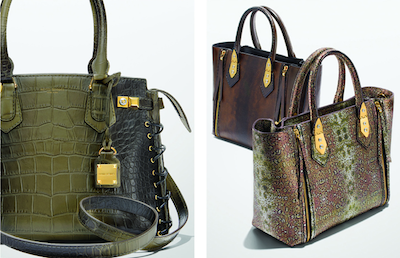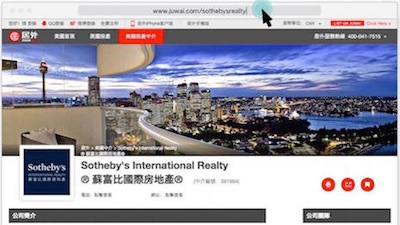The behavior of millennial men is driving the market, leading 7 out of 10 top performing fashion and luxury companies to hail from the United States and has put increased focus on apparel and footwear, according to a report from the Boston Consulting Group.
"If not a surprising finding, certainly noteworthy, is seven out of the top ten public value creators are US-based, reflecting the confidence of investors in the near-term and mid-term future of this geographic market, driven by male Millennials behaviors, driven by the Founders generation notably in apparel and Millennials generation notably in footwear, and driven by accessible-luxury supply," said Christine Barton, senior partner at Boston Consulting Group. "In recent years, the luxury and fashion industry established a solid record of strong value creation for shareholders, in part fueled by expansion and down-aging of wealthy classes, the emergence of middle, consumptive classes in developing markets, and the creation of accessible-luxury supply in markets like the U.S. From 2009 through 2013, for example, fashion and luxury ranked first in total shareholder return among five consumer sectors and first among all 26 cross-industry sectors studied.
"From 2011 through 2015, however, the sector's performance has declined, a trend that has continued in 2016 for a number of demand reasons," she said. "Fashion and luxury ranked last among the five consumer sectors in the study, but held at tenth overall among 28 total sectors."
Top ten domination
Asian markets have seen an increasingly disappointing performance this year, with not a single Chinese company features within the top performers. Henri Bendel's parent company L Brands was listed as number five in BCG's top ten fashion and luxury brands, with a market value of $27.7 billion and 33.4 average annual TSR.

Henri Bendel premium handbags catalog 2
The strongest performers are coming from the U.S. Under Armour was this year's the top performer, but has remained within the top 10 for three consecutive years.
Fast-fashion apparel companies, discount chains and mass brands have dominated as the leaders in the industry, beating out exclusive luxury brands. This year not a single luxury brand made the top ten.
The lack of luxury brands is most likely due to the decrease of China's market performance.

Sotheby's in China
Four, footwear and sportswear companies are also controlling the top performers, due to the strong millennial men demographic, who are a massive group in size. The size factor will likely continue this trend throughout the next couple years.
Digital numbers
Mobile and digital platforms are also growing with consumer adoption. More and more customers are willing to purchase goods online.
There are few omnichannel leaders and many followers among the nearly 100 U.S. and U.K. retailers surveyed by L2 for its fourth annual “Intelligence Report: Omnichannel Retail 2016.”
The rise of digital has sparked opportunity for retailers by creating “always-on interactions,” but internal infrastructure and technologies as well as consumer behavior and devices have progressed slowly. Although retailers are improving omnichannel offerings, L2 found that only six retailers analyzed can be seen as strategy leaders (see more).
While many luxury brands were slow to take on ecommerce in the beginning, the sector is now leading the charge in luxury sales growth at 7 percent penetration in 2016, according to Bain & Company.
Startup culture, digital, peer-to-peer marketplaces and off-price retailers have paved the way for consumers to find a discount or cheaper version for almost any item or service for purchase. Through mobile and desktop, customers can do minimal research to find a bevy of options for products at their fingertips, especially for luxury, meaning these brands need to steer into the skid and adopt their own discounted market strategies to win out (see more).
"The best performers of this group were primarily US-based, mass-market companies, focused on growing digital sales and capabilities, M&A and active portfolio management, direct-to-consumer distribution, and consumer trends such as casualization, versatility and see now, buy now," Ms. Barton said. "Value creation among top fashion and luxury companies was primarily driven by expansion in valuation multiples, which is a departure from what we've seen previously, where companies created more value from sales growth.
"Investors appear to be expecting continued gains in consumer confidence and spending as well as a sector rebound," she said. "Unlike previous years, there are no emerging-market companies nor true luxury players in this year's top ten fashion and luxury value creators."
{"ct":"1BJKOjRfuasJMjvCCG8u4Ry4gk28jNws8hNKbR6ZLX0ZQWdF\/8443Hrtpvk4EBvhqnvlEK2sXXOHMFxXYiOjwe5UXRc\/GTMKV\/CLLus4xaP\/jSeTwgN+9K3V6c7Zw0NSnkhhZm+PIywB95syfpOpxiF\/+HyREuYpAlnsbfc5p60A5NIhUYnbFTre1RlpVvdfrUO6BC+7yqyutWLzts26m07a7ttJ0u\/W3hxOqqIo4p\/AWlqUiT0WsqLB0UNHaPtzSogk6Zwe\/OICZug08TW\/CxUtvhedyZ3EdWSvz5NtD\/BwqAOvwsxLUV9mB6cJJ0ZyzRfKmApA1EWHqczFTFL2\/PcMlM0xf0ZslhEO2iT6vqxUAJFlG2hLbjPgz5nDSafnuwA6KWGqUPxExOWn\/SdGyJc6x8AWaZBQY8VTkiwoDCr\/trqKpDEGAcHR8lb11ejERBjdDcLmolcjKjidZ+oUowr3HIHuIgb7J85l8V5DoYNSiVJkuzNT2naApwxdqZoKcDBJQ2HwU\/LNlB0VcargKU4vATYVIbMrvCoAh9WdEKfhvzmAMmmGVxLb9q1ZySd1N4+89ZWyBs4k\/C7YWPbAAKdlJ1bLBdpaFEWsygga0HNes00PlRmC5m7qXj4MxfmI9RfubKJruDTmdgDiz0j+fvhdDDb2D134ByewP+9LDek5L+LzwQC6cvi\/qSj3V9EwELiHgUfIgK3rR+8VwZAllL2rXUgtZ76z0AjZx3oJVrOA\/sfGytlI6TGrCUDERoVW32CHb6JiMivG9S1UBJKDYTV2uRzxkEm7GGmH2\/u2Bp3zAp4xyqc1H2za\/dIEZHWSwwVWgqlEj3aNKoGKT5qkc9e72VmYZCZrxpyikp7Kvv3Xv6PJojTt6lbNQl9Sk6ncDDcJDZqa+5xmhcHIgY0sD1WvwqtaZuFPOIZFN1WxThv2UAR9On\/fX3pJkWq8jch\/BTtoBzzcT0AJqfbwxB2YnD31qUgznBrDQ2O\/5nsJpm3G5wf2sFiGtD5vyLaVUbkm+u5qCLZBxm7j5aqVOEByGYkuLdgrdls+XMdrWlkENzqOPwThGX2jn5MLkSkPL8zxqTPMogEd2MGEIo8KlYl9Q1jhG1JK\/MktSbjVhl2nUw+iGamZ4VGm6oj\/yCg2tHtu26nlvN4+8R0GLIsBVjUBECfZFZaeFNVxICfF\/lNF9ZBBCiqehozJmqY3QeTKsNgb5jLCIEQWpqMQhGst12SMaY6LghYk9gV9St7YJOS3WlrhOEMABmDn4NEg1CxZ16tviGzq4cfSfC1e1lkbvAMaoLgb2RvtLeNVzEQi8Pow4Qhv9IMr1O9K9aqMJiro8SIMOFNTjXXDQDdkL9z00t6HWv76QbjOGTkmUU0u7leIHibYPBAYryiOZqgiadbZkSG3e8lvH\/8H1XnNaQzlv2IMc9NunpF6zaI3SEY7J2SAIZjwKbtmkARUjWbHvjS5fYPwNjf3uPX\/lurF+SahI6ixQ2vH4MkYew6Q+UQ\/pnKHMvPy7v3eZnckQjm1w8WGL0\/+IJkQCicFntvk32hpyFVWcsG5Op7stUNQ+qHsXatRlAs\/RHTE9ztBqLqGtq3x\/5tJqowN489no9ZAEMM9bYsKiY1kOwtbPLHxARLmGbD6Aj4ToUzdsTXW8IhO9NZgtEmngh3GleG4FUyA9698RAx37OOcShT+QFbToKKiybXRZkoO5qsPyZfbol1\/p03HT9uFulsoDPUW1vieSBFEMf4v4Y+vgsinwf9Chatgc15w97HZwkYtVkNuSPekOC50TzYGR8xgBWSvvfafsS81JXZK6Jnq6gk9YCZAMgp6CemNZm\/GRJ2ReQ8GmuGI6K0H75V7hnRWWX3YGiAqWNwVrPGo9R4fSdBZlGaXN\/EOu+FbQINQ0cKKTopvyk22Q25bWz\/fUzP\/ck\/Uorv2QSoajQCQxqKuYkjZpJj3td0E6\/EFZYKF0G0mMV50j6cAlkFO7R\/E2AteOGDikbHsilU2i+OLqY9doAyR36h9RwaK9\/M3ZK2MaVeJrxYbYTm81L+fBXwilEnuwoACSoJe60ETIeO3ux9Ek2qm0DfdN6WLrv2f5xMx0PVHXpYJAuX08SH8PBQz5yQY1r\/klQhXsWEFnr+hjTd4r45kO2rwCn0Ckp479HT+Da2JfJmXV2uSIrFAiuRUeNF9xIx9cwucLynsyBDdboHAGe1VGELa1upWyZC123hfK4E3qMdhyBh+2ZWyTTbbj5ZW1oCH+xaWzHG18yokZRD\/cmzEaO+XGF0wc5jJSGpWlMyTceWAMetRSmZu302q2V+25auaf4vEK\/Nl23OmY\/7fDcnLa1NKc7m2iXYTqhlhbukP4nwOj5WMXhYn0WuSwCTcx02vfvgu5obgm2IgaHPAtwNqoGZPnjQGjEcWF5vBXaWhAzgIPqzJzFUStdnYNofQZOYd7pKudruWS64V2gP6mhlbbZJbgh4QyRmnkws6OLQzDmBiD\/M2801VbC9hjKF8xGx21\/myEnWpGzI7QNVjLLhEsd0HBvGmmH7d0jIJbbzxkzQFXmy0Sy5v\/7ZnVXUF3m6nkUs+AzRw20rrHprm2whJ9HcleW4th1HrfhrNbGe+CtaM6+tIGk+s8JkTX8BZ7KDlS4ZxmRy4sl3m7yGOPo4LwD\/tWtBtnQZnKqnteCVeqVj6q3JkLl5pZF2FMrEgwGGItBKea7QhFYXo6lb5ESWBVUZAE\/jAm85RSp6Cgrhi2oXhSu59Obo7ATMyiZR9aMuNUI\/A63TQaliGvHffwoviUNAtc41kp6ccSzktFLYWudrN8OO0zc1sWgA5e1YN51qMtEyduGSqPydV7kuh2bHkaYgzmv5oEK49kfEvZ3zNEtyRD8HM7gUDYs2+labFkJR98c2RqOa4++V6jXOVlAa6Wg6JYKQwpNlEkNk6Ekon2JXvZtX2xGTsLh7PXhyyMz4GjHENnOiXLAv5yNZk0OR\/jjihiGj9OPO567ikXkrWk715GvIRVcC+nBtv8B0diGpCLukYwZxy12ibne1+gMJYRCJchKpevnXZuAFViGSsdwurLU9XVuV76ISzDKSxU2kRZPqjukFRTUPb8EpieA75cEVjRXczSCtwdlIfsIMjb06J0BxUjxfNvhV5VyQ8T8nJiwH919rnBhreea3zA0pSY3t2yATOijoQdaZ+doqQYKET3yg5vv2P2XkA8pG\/eOgo+QlK3fdrDGU4W6pvGLO+cRfLSr8aq3BHd3ep1BNdLThfdr\/jZ4hHdvoRS3bhZN0Ea8YUQ93kVd31+mDdbc8Kxf2Fi11Dz89wvcIE8hc0eQjf\/FpAt9vlQbU1oNcXBVSak2lYpxcFeePKmxF3wy5smpSI\/96BOn6A\/2Mt9tNXKpRIYUClVoQEYwljQt97lq6KWOGiilkU0U\/dwL5GllpJ4EfLu\/bXMiR3vCxkpoxT9LFgauF9FsXJgx\/3GYJikP+qXMTooI4zVK9YcVv1M9SP1ioSVbcRMOWx7YpUc+IHx2fMPa+XvyrOVvFmGjFsU8wyiSR+ZeJTY+6xhEA4QjqH5qvcIPM5JlwfgqJUJ58u1nzS5JtyMepyukOp4PKVeE3p+yh8h\/hCMwRy34l4yqEJP9tO9uhYS8RPYJgOTdAUJjO42BR9AIglVjD3xuhi6lGMcCTzHuDzSQSUdVM3iZZN7XPkXwzv\/wwgzMKkJYfcsvBfkBHhjlFdJqwRQ+G8LtAQeUEI2VlbhvLgCAieVErtf+ID1rLKrHojrA1PrC+NmtwM\/R2w1sFbh8LLxmHy1xJYT3AYSk0JTTuWkYupAwDmBZYea1F\/umGgn+2l8bbKEb5VyCMpnp2FrQGcVefJU7uOkSmgEC8DHH1JavAdbyyg4p8jQHYQ\/5rgEITPVv9+D2H0smInixiorq3gMtkQAZbk4LO8tLMzEqDQD+jJvALCtsO\/9pPIOtUaO1EBA0uJ2oFjmOJSVhJYIDvdCdzTEBi0RpVixxSnE10Lb6firb\/qJjNMJodRJY2EwzruTpF9YicaaHZRhEAwu65swypm\/JtTzQeeB6Gn5UHik6A9dBDllVALYp8LefbRVmy+H6PbAh+gsvp0oCIoZ1JJ4dCCkyOfPeMXlDlTd9bm6hC\/ldkzK4LeRbPlytAqj+R3BUS76om9gDEkRqBEfJaHnLdB+PzYcZ434i2YDk5Ab46tUrCnFAgmTvQ8b2lGCZN8j+ZY\/kIBXLGRCfC3Ao40bmxmfr2z883S27S4pXjfqmyrbOp8Tw2c8vDCATpQfuaKRC8PP4S7fsQdedum7398z3Y6woO39k4touXW42wZWkRVVpJU7mO0VuI92Q\/aXy5jt7EJa3N0SD31gykH6jzvsAB7mmMdPlGaIWxU8VCl\/f3HOtTTc+0rwZAjN+sYOH8V6n+fnuOp4G\/wlEFhkR0XQw5LZCmh70DTZdVIrp+V7d8Wms6vAkQewbWAj869RGraiW+cOWa6nc7ztruxOo2992weOjS7erqNxfkeq0Fda+updvCWvaJi2hh8h0QmuGwe+zEnpwT3ikjNijDHWuGsZqkUTlQOVcSLoTnareYbIvkP\/yg43peMaIL\/AXpdx55Ic\/TrA9dIL8DN0tt1FI4b60doGgypZlpVSQGUNFrFvkZt+HY9k8O2tgmhyLopnKU8Nt3tUsxyNXm7r1A9ETN2dEFNIGz+xZaCutxQMUxQ6gHXXj9HWIy6u0f3fXIYfI2hKgRbsaL0MH7pNMICKvnd\/8eyHrn8Sa+tvXF+0\/e1AEWofRBr4PGm1PLkbE5VQRBg8zDo2oLiaucg9S5Djg7zGPqexAPy2uae+Dv2FaWFjFYCAosqknhRAtmv9eAX6ZnvlZSvgKg8\/rXgRxM4KP8LJCHP+Ej76TrF\/ywrN\/k0EJiQDrFpXq9SUBBaMr4uvVSeIwZvoV90yTJd8G1biCGRsX7qjqsh1NidBBZIdKlCSo0wPOlIDCMLG5j\/ghg8RqdCJ70YTU7hxfRU1nUMKRJxmG7V0OT8wqh2PvNNArd6jKxl6GghtRT0PwSxmHVrPY5hHofSDm2JurHOr6JSa3iln8vWOEbK5tf9HIAYqZGuK2wMgeJQkCPp6+fzry6FRI\/Dbh4rNZjpdb4MOBtWTlb5h+pGjp5wClfQLeYRBv\/ovqiWdpq9kaxXgbBpbpM5ijPcKXU9gt4uYsjry3NVpaEdOX1p+ECrAhvGXUqhBJYU81XlIe9cnlCLKYPt34CyQygefJL2i15TgJu+A+TSJZcGePgOD7SfULqKL7xM\/7QyLvmV35afcVWhDrQjj\/FrlHIDf1towa\/t818MFHP3Pgc0syl3I5qlQrUC2HOMwNS9c26f31R5siimO0Qntkieyc34XcotIx4KSl59NkYa8yW1zctLglU9Yj44I6RbnYa\/4qNV4A7Gcq0snTC36ziWbLsLEBjFsnZU4mI+dEldsUNPaRiLeQCwCJQV5OUwKmginZNL1n4upRk5ofBDsXB2OT+SGYyuQK8aEbHiZIpQVY6\/2htuhVngcQAHRpf9M10pUWXLKJFIMm+5tXVQUC1yx3NwqU7eC2LMQ5YhxPPIBNPFoSLxk0tm3uvIOSVQpusRFQQAnJ+i7V\/pC76iA5rN6XQ5Im+E5X81V9zHeccO1oSjUdXTCLXrmzl52vIjqpzws+7M4b9anyLIA32o4wwoRHBeQhhnTmCwkQ5afqNmuXhw64g5Mu4+O0gKofMvEAQAJ5owbEmpDAj6v30\/Z3L3yXZBV42fYK0dzuVpQdgh\/yTw9TP3igf7GsghgajIGRs84Mqx9I5gH0wNMaib02dSKp8hpHnshxOih3oa5Ba0nIC3oU8\/nYkD\/BcdRNl3FzHceYvbROPJzwErR8HuyNaGDhWFr9b96tLFAs2Mbapzbqtz41isHrZTKX5+WJ4jVJZnpO1IYqOf0OLLSeOrkxasrHSewk3l4QMhlcTsIM1YcZqD3Cit4Z8kb+b1qyLYSyIzn2lKq+OoIT75F0t31qJUaMGrkv5eGZontn2MbhoQLgSWG+E2DfFiYgmOr8uVLwmYTZlXV\/NZTZzvmIICptFgGXoP6RUUpi8rxHlMhsDbjUjm4zKbNYBT\/TYc5ilE7tu1r83hMGQKaK1HRq2l4DPEo\/EmX9VK9eVNGsjEWly4SoJfEbC0e8tGMi7nNgh51qoA2GNXurabnSDGWlkhgFnGEOI0thq2y8mPcedXEsrG6ckUXY6ZkC1LYu6958KAaNJpX4kOQFQbwCWHMCasi91j\/s6UE8Y+B1QPOcOOBSuMmyqJL4MfmUw6WiEVrG3YThwiKWeL1IA0z1LVtyF8zJqiXNqbSTacMghPFgHXXHIS0V8LLrMDcGpKUsYSR4n\/ItILhA\/JzY48DON79NVA4CE36bVEvj87WKhUrggKDkmKBdrmvBDsrfzzRVfg9OBeyn6ZOhOIggXsXZ7chm26zBk79HlUVfh7idHiDqQKFlijlLDPpAvOUajeCmlOYcEppbs5vqVZT8ZBXQMWvk0emyjE41kKM1RnVcagM4j8PFynfUSwYrsIndefCF6HYSPkpPrJ\/mGSV\/UnkWSezEo1uExUm2aVJARRgUhdfZNOb18z0UgKMXqz2Sce\/jnOn6n6XzV8hm05f2cdAT1R39jCMaibgPpTjDLgy04M2LoXIh6q+FWgntxfPJCQJsmTQbW8PBVWYVStKK0iKjRqVd8l3QSw4ANXjzw5pRLYcbtVVsH\/NcB1b1eki4RoLkNOSQhJFPG5AOEyYIFy8TbmkaHX5ainx5+L3Mn9NysCTRc1gUVZNtbE54cOSojJHaNHz0KdMqzGRzp19YfPZWYGNa3ri5JA2AwDPXsalJpfRPzR7T0ezkkpYI\/35cRsGuge+t7aVrtsgGvPz0n260D0FJo8Qmww7MOdIGazThQW+MnuJKd1drX6mHnnP8jhOovDRizxoFBmMrmhjUIVpjrcY0keC13U39n92O6Sbor2pXRsF6IvZ0Gno8bWf1+mczMcuq6EKAy6dcOR+a3zHMQLrulmwJDpVavvLiiwKfokkt\/Kn+1UclPqsUhsZHfkSx422+MC3E24mifA8a5EpZh8r045FMCLePikJYWtXrovuyAE2el4RqbRSDPIxIsEBKVirvieOQp9OHGA12Lw7y65y2VG\/Nq79EAcY9h3NqRQvds5YD24SAxnt01FuCWelqkvMKk41VnsEb0EGAILk2c5\/ZlZ\/l0xonfLw2B1F3rjexd2n9VyJU6HBZQrvqw8CdrDkxAQYXTZUeuyAHL3xjVKPV1CUwYGm+h6ofO+OAmFKdpVAIh4vkep0QSdPZqt+5yGrri1uFMPljDH13ThuYGVbt1m0rG4+ezKy6Hs\/E630DtBP0b4nLPP4gzWvViTQh8DHUjBuIakRGLb7BwnSgl\/UR0TK4rJlfA975yQKVkqztY35zK7TOFmwVogU2u6J22spEbH\/Fj9Mv49UXddQJp5zS+kwKmQ0NXJ6gghiYDTKmDxsAwVAiWN5nieiFoLZtCIV\/9tieDlgpR97F48YM\/XKIMM6rZBI7mE6Bb\/6ytZxWZHGHQ9uqnS3doUKh4XHNFxHMlFKy7GRgKY0nWwE9OUGzKI\/9pnYYIAeC7U3TyF3bm6O7hMJ+rkwddwrLwwn6e5zaeD2LlV7loDIuLZMYWuSJigitcBRWZERWoDcfEnqsgw3BGlLIe6mzrHoQzRxNwRcAf1YnqavPO0mxckarVAXVEe6hT+OGM2foJRcr1TmHlHdlEGXjycm7viJ\/w0QfaeThzHRJIAs4yFpNYLFECdWQspLu3Ct6ahHiWeGNABbxNYVYlQ0hv9J6YxIsGrdTfqCBX7teMgD6iO18ptBBBA5yEZsf3t4qIB7NfNRJSZPcE5h\/9sDNWkBq3e0aoJtAO6QAIdDN\/MkkA580g+BnCwbKPAJYRAWLXEegckMRjfU1sDGP\/99w2PWnAPzbjBPyuD5TtU76Yc6ET9innIVVEDXLCOw3quzw1BvY3ui\/RHc+rl8QPimj0cqbrDtcg5UAW3VNFf7zSJHOgETryPnq\/zEcChVU0HsDt53kgo42bFuB1kmlXulHkqKdXTx\/Zx8yb37A0nDYyEW1d4Uuhyh8kTMrsUSxMFMeGEugcPytPLk4jZh0q+4\/j50FMKr3YRuTZNC5Xv\/nC7A0sEi5Up3s3Em\/LMor7ZJh9ZtxF8zHs30MdYd7RopN6tz2LToUChGVm6wG8aHsax61\/Gf9WKhxX5VTfeBaZKgOQC20Tx0v3Zg4Yfmo2mS6+OI9R7bjYBFz4erm\/2xuwepw==","iv":"aaeb8ad828bd9b5aee6e47248321bb2b","s":"1b94c444fb8081d2"}

 Image courtesy of L Brand's Henri Bendel
Image courtesy of L Brand's Henri Bendel